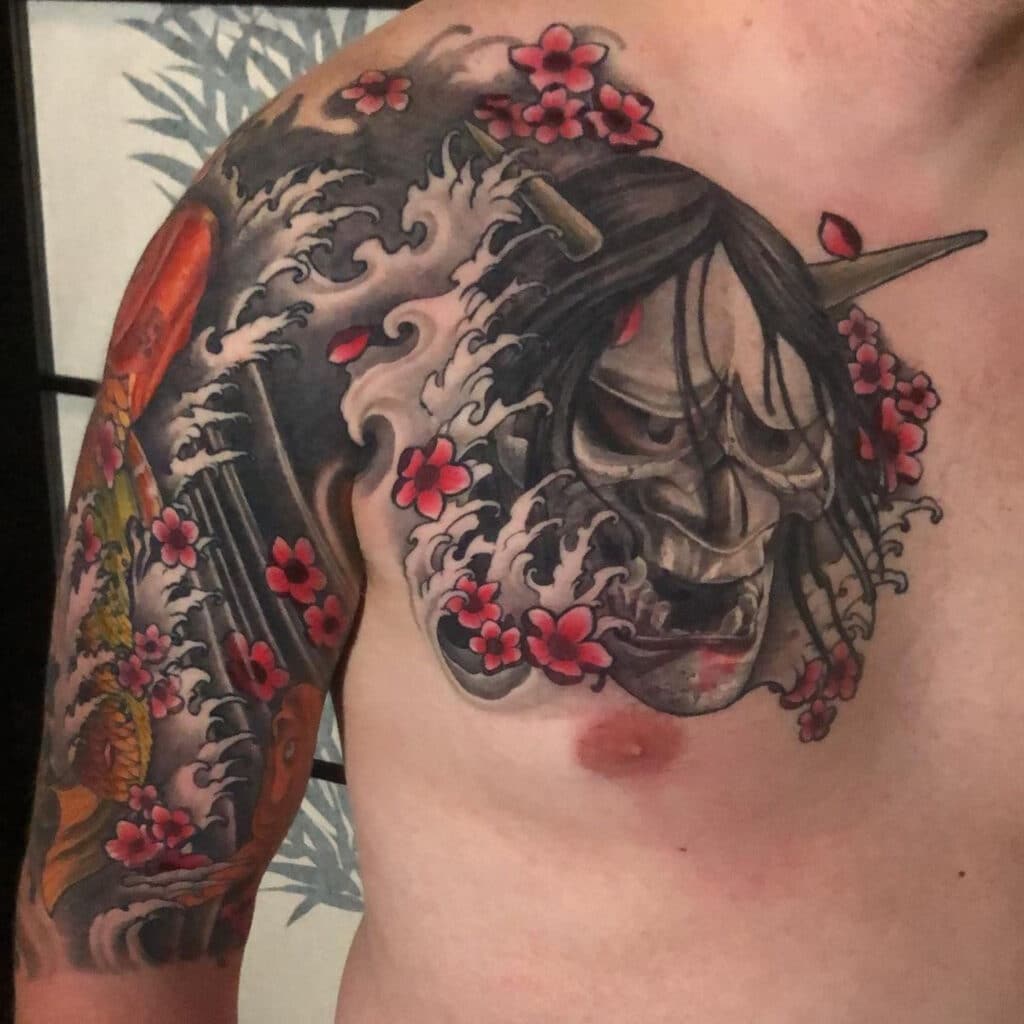ASIAN TATTOOS HAVE A RICH HISTORY

Tattooing in Asian culture can be dated back as far as 3,000 BC which can be seen represented on clay figurines and statues in the form of etched designs and paintings on the faces of the figures in Japan. It's an art form that has been celebrated for thousands of years.
Mummies found in early China have been discovered with tattoos on the face, and were attributed to the Dulong and Dai tribes. Women wore these facial tattoos as a means to become less desirable to men who would otherwise do them harm. Other beliefs were that some of these facial markings were done for mystical and ritualistic reasonings. In modern times, descendants of these people still bear these same type of facial markings, but their meanings have changed. They are now a rite of passage, a status symbol and represent beauty.
In China, quasi-modern tattooing can be seen as early as the Shang Dynasty, where some of the different peoples of the region began to cut their hair and give themselves tattoos to gain acceptance of the more prominent groups in the area.
This changed, however with the rise of Confucianism, where it was said that your body, including your hair and skin, came from your ancestors and it wasn't yours to inflict harm upon, which included cutting your hair or applying marks upon the skin. It was viewed as disrespectful to both your ancestors and your mother and father to cut your hair or get tattoos. This is where the notion that suicide is a sin is believed to have originated, as it was the ultimate act of self harm.
Later in China, tattoos were used as a means to mark criminals permanently, known as 'Ci Pei', which loosely translates as exile/tattoo. Even today in modern China, the connection between tattoos and criminals are viewed as one and the same.
In Japan, there is also that connection, mainly due to the heavily tattooed bodies of the well known criminal organization known as Yakuza. Fortunately, however, many still attribute tattoos as a form of art, and that people other than criminals have them. Historically, tattoos have always been a part of their culture, and there is no sign that will ever change.
In the Philippines, the story is completely different. The history of their elaborate and beautiful body art is a rite of passage, station in society, a sign of bravery and a status symbol. Early Spanish conquistadors, upon exploring the Asian islands, took note of these 'painted men', also named 'Pintados', depicting them in drawings and paintings to share upon their return to Spain. Traditional Philippine tattoos look like a combination of Maori, Polynesian and Incan/Aztec designs. This would make sense, since historians believe that all these cultures originated from the same place.
Korean culture, regarding tattoos, was and is very much like China's. Early on, tattoos were a means of expression. However, they became a symbol of a person being a criminal. Your crime would be tattooed directly on your face so that you couldn't hide what you had done from society. Everyone was allowed to know exactly what you were guilty of. Escaped prisoners would get a very large tattoo on the forehead as a way to single them out as trouble makers. If you escaped again, it meant death. In today's Asian society, the taboo of tattoos still exists, and are even blurred or blocked out from being viewable on television, movies and print media.
Much like the Norse Vikings, it is believed that the Mongols, who were lead by the vicious conquerer Genghis Khan, adorned themselves with tattoos to appear more threatening to strike fear in those they meant to conquer.
As society progresses past the puritan style of thinking, more and more people, even those in the more oppressed regions, are becoming more accepting of tattoos in their culture. Most people realize that a tattoo doesn't equal to criminality or outcast, this includes the mindset in Asian society.
Today, people from all around the globe enjoy getting Asian inspired tattoos. The colorful and bold designs created by the Tebori artists in Japan are very popular. Images from Asian culture, such as koi fish, oni/hannya masks and cherry blossom trees continue to dominate the imagery people like to have tattooed on their bodies. A rise in the desire for anime style tattoos has grown steadily for years, celebrating popular characters from this other art form.
Asian cultures are rich in beautiful art and history. It should be celebrated and appreciated and preserved for posterity for future generations to enjoy.



